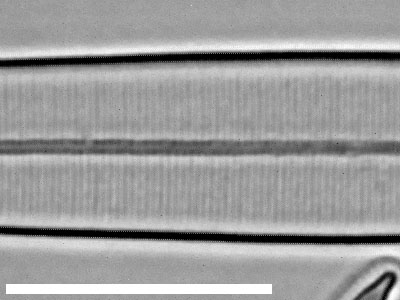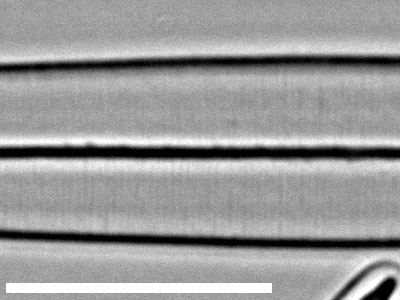Does it matter if the light microscope is not set up correctly?
- What if the condenser diaphragm is closed down too much or not enough?
- Does it matter if the condenser is positioned too low or high?
- Should the condenser be oiled to the slide?
- Effects of light quality
Monochromatic and short wavelength light
back upMicroscopes vary enormously in quality. Basically, the more
you pay, the better the lenses are. Poor lenses suffer from astigmatism
(small round objects appear distorted, as short lines, and change in
shape as the focus is altered), spherical aberration (objects near the
periphery of the field of view are blurred), or chromatic aberration
(colourless objects are coloured, small round objects are surrounded by
colour fringes). Good lenses are specially designed and carefully
ground to minimize these problems. However, even the best
planapochromatic lenses (corrected for chromatic and spherical
aberration) will perform better if they are used with monochromatic
light. Generally too, lenses are corrected for a particular wavelength
(usually green, at c. 550 nm) and this is convenient because it is
relatively easy on the eye.
However, according to theory, the shorter the wavelength, the better
the resolution. For optimum resolution, therefore, we must use blue
light. However, the human eye is not very happy with intense blue
light, so is it worth using? Again, it depends whether that extra
little bit of resolution is necessary or whether the information can be
obtained some other way. The specimen shown below is the same valve of
Amphipleura pellucida shown in the pictures immediately above, with
36-37 striae in 10 µm (c. 0.27 µm between dark
lines). This time, however, the optics used were 'bright field' (i.e.
normal transmitted light).
Note that for the blue-light image, the condenser was not oiled to the
slide.

Amphipleura, blue light (max transmission of the filter at 440 nm)
Condenser not oiled to slide. With a wavelength of 440 nm, the theoretical resolution, even without oiling the condenser, would be c. 0.2 µm, so it is not surprising that 0.27 µm is achieved.

Amphipleura, white light: Condenser oiled to slide. The striae are visible and could be counted, but they are not well defined. Again, correct Köhler illumination, but condenser not oiled to slide.
The longitidinal and transverse striae are both resolved, but there is a noticeable loss of clarity, relative to the image produced with an oiled condenser.
Theory indicates that a resolution of c. 0.25 µm should be achievable in this case, whereas only 0.32 is needed to resolved the Frustulia striae.
back up
